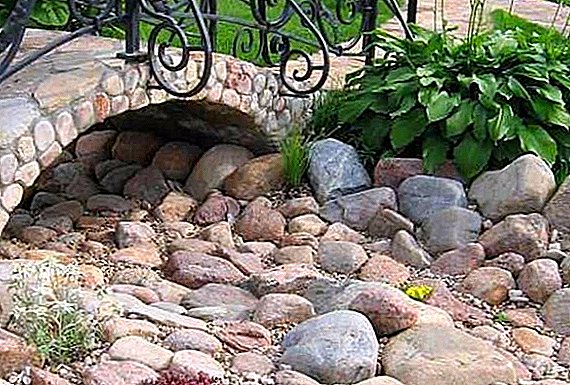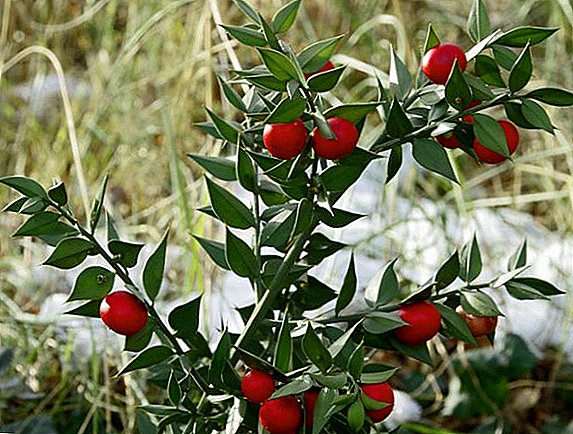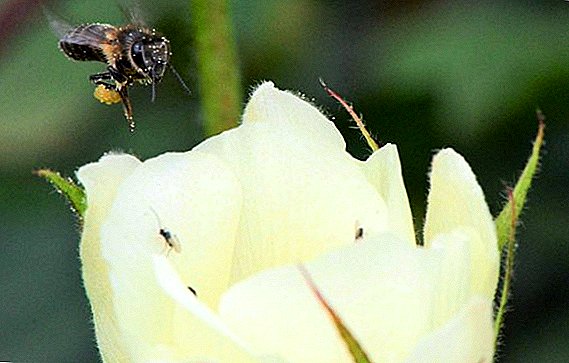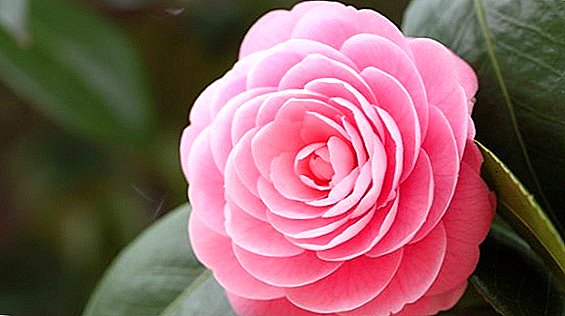
Gardenia - a wonderful compact shrub, decorative and spectacular. This plant comes from the southern countries, so it is quite capricious in the care: it is necessary to provide gardenia with an acceptable temperature and humidity, fertilize it in time, protect it from pests.
In the article we will look at the peculiarities of care for this tropical beauty: find out what rules need to be followed in order for gardenia to delight with its healthy, flourishing look. Also watch a useful video on the topic.
How to care for indoor flower?
Consider the main points relating to the care of this capricious plant.
What to do after purchase?
TIP: When you brought gardenia from the store, you do not need to immediately replant the plant. Shrub needs to adapt to new conditions. Immediately place the pot on a permanent "place of residence" - on the window sill, where gardenia will live.
This plant does not like moving, transfers, transfers, so it is better to immediately find a permanent place for it. Replace gardenia in another pot a few days after purchase.when the flower has become accustomed to a new home (you can find out here how to make gardenia transplants at home.
Lighting
 Gardenia is a tropical plant, which means it is very fond of heat and needs sufficient lighting. The light should come to the pot all day. It is better to choose, therefore, for the maintenance of the plant, the southern or western windowsill.
Gardenia is a tropical plant, which means it is very fond of heat and needs sufficient lighting. The light should come to the pot all day. It is better to choose, therefore, for the maintenance of the plant, the southern or western windowsill.
In winter, the plant light may not be enough, so it is often necessary to provide the southern beauty with additional light, attracting artificial lamps for this. Arrange artificial light sources at a distance of 60-70 cm from the pot.
In the summer midday heat of gardenia requires protection from direct sunlight. To provide this protection, shade the window with a light cloth or translucent paper. This measure will help preserve delicate flowers and leaves of the plant.
It is not necessary to turn the pot with a plant, as many do, trying to provide sufficient lighting for the whole bush. Gardenia does not like permutations, including a simple turning around its axis of the pot. Shrub can react very violently to such turning over: it can also throw off leaves and flowers.
Temperature
The plant is thermophilic, so you have to maintain the optimal temperature in the room. In summer, tropical bushes are suitable for content at + 22-24 degrees, and in winter - at + 18-20 degrees.
Soil temperature should coincide with air temperature.. Especially important is the optimum temperature during the flowering period of the plant.
Air humidity
For tropical plants need high humidity. This moment is especially important during the period of tying the buds: the high humidity of the air will provide a copious amount of the latter. The lack of moisture in the air can lead to the fall of the buds, their grinding, deformation, and the loss by the plant of its decorative effect.
 To ensure optimum humidity, before blooming and after flowering the plant must be sprayed. As soon as the buds bloom, spraying must be stopped., because water droplets can leave ugly spots on the petals. In the summer, spraying should be carried out several times a day, in winter - once a day is enough.
To ensure optimum humidity, before blooming and after flowering the plant must be sprayed. As soon as the buds bloom, spraying must be stopped., because water droplets can leave ugly spots on the petals. In the summer, spraying should be carried out several times a day, in winter - once a day is enough.
For spraying, it is better to purchase a sprayer with the smallest holes - in this way not even droplets will fall on the plant, but simply water spray. The air humidification procedure is recommended in the morning and evening hours - but not too late, because the leaves must dry completely before the darkness arrives.
Watering
The plant needs a sufficiently hydrated substrate.. Watering is done on top of the ground. If after watering into the pan excess water escaped, it must be removed after 20 minutes. The soil in the pot should always be a little wet: do not allow any waterlogging or drying of the substrate.
It is recommended to dissolve several grains of citric acid in water for irrigation, or to add natural lemon juice (2 drops / grains per liter). This way you soften the water and make it optimally acidic.
Best of all, the plant will feel itself, if you place wet expanded clay or sphagnum on the bottom of the pot - this natural drainage will provide the plant with optimal moisture.
The soil
 Gardenia loves soil with high enough acidity - it is necessary to provide the plant with just such a substrate. It is recommended to change the soil in a pot every couple of years in the spring before the beginning of active growth of the flower. During the flowering period, it is forbidden to change the substrate in the hill, as this may lead to the fall of the buds.
Gardenia loves soil with high enough acidity - it is necessary to provide the plant with just such a substrate. It is recommended to change the soil in a pot every couple of years in the spring before the beginning of active growth of the flower. During the flowering period, it is forbidden to change the substrate in the hill, as this may lead to the fall of the buds.
At the bottom of the pot under a layer of soil, there must be a good drainage from expanded clay or sphagnum: such an interlayer will provide the plant with an optimal level of moisture. Gardenia should not be grown in a soil with a high lime content.
The following soil composition is ideal in this case.:
- leaf earth - 1 part;
- coniferous substrate - 1 part;
- sod land - part 1;
- peat - 1 part;
- river coarse sand - 1 part.
You can mix a similar composition on your own, or purchase ready-made soil for azaleas.
Details on what soil is suitable for gardenia, what to look for when choosing a soil, you can find out in this article.
Top dressing
To provide home gardenia with all the necessary minerals, it is best to use liquid fertilizers. If you buy a ready-made complex, then choose one in which there is no calcium - this mineral is contraindicated for gardenia, it has a bad effect on the growth and development of this plant.
Feedrate frequency - once every two weeks. Pay attention to the state of health of the flower and the symptoms that sometimes appear on its leaves and petals.
So, if yellow spots are visible on the foliage, it means that the plant has a need for trace elements, especially iron (why gardenia turns black, leaves turn yellow and fall, and how to help the plant, read here). If a similar symptom is found, mineral supplementation should be carried out more often - every 7-8 days.
 Ready-made mineral compositions suitable for orchids and azaleas are suitable for feeding.. To provide the plant with all the necessary substances, it is necessary to prepare the nutritional composition in full concentration, and not in half, as indicated in almost all packages with fertilizers.
Ready-made mineral compositions suitable for orchids and azaleas are suitable for feeding.. To provide the plant with all the necessary substances, it is necessary to prepare the nutritional composition in full concentration, and not in half, as indicated in almost all packages with fertilizers.
In addition to ready-made complex fertilizers, gardenia can be fed using home methods. So, you can buy a substance such as actiferrin in a pharmacy and dilute it with a tablespoon into a glass of pure water. The resulting solution should be watered shrub every two weeks.
What to do to accelerate growth?
In order for home gardenia to grow more actively, to increase its pomp and decoration, it is necessary to cut the flower from time to time. Pruning is done after the shrub has faded. - that is, in the fall.
IMPORTANT: In order to give a new strength to the plant, it is necessary to tackle weak, thickened shoots - they should be shortened by about half.
If you pluck the young shoots during the growing season, the shrub will grow more magnificently, and it will also bloom more abundantly. Use healthy and strong stalks that remain after pruning for breeding gardenias - ready-made planting material should not disappear.
Transplanting a new pot
To transplant gardenia, you must be consistent and accurate. It is important not to damage the root system of the plant. And first of all you need to choose a suitable pot. If you just brought a plant from the store, you should not pick up a pot of enormous size for it - enough capacity, more than 2-3 cm in diameter in a store pot.
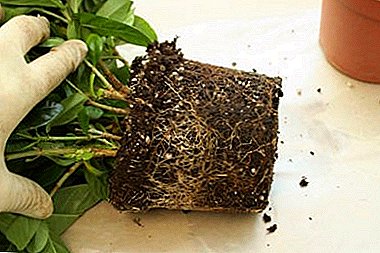 In order to properly carry out the transplant, carefully along with the earthy clod, remove the bush from the old pot. Try to remove the old soil from the roots (without fanaticism), and then place the plant in a solution with a biostimulator.
In order to properly carry out the transplant, carefully along with the earthy clod, remove the bush from the old pot. Try to remove the old soil from the roots (without fanaticism), and then place the plant in a solution with a biostimulator.- At the bottom of the new pot, it is necessary to place the steam-sterilized drainage (expanded clay or sphagnum), then pour a layer of clean river sand, then coal, only at the end - the ground. The last layer should be more than any other, this is understandable.
- Gardenia remove from the biostimulator, a little straighten the roots, put in a new pot. Lightly sprinkle on top of the soil, crush the ground a little as it sprinkles.
- After the bush is in place, pour the soil on top of the bio-solution in which it was wetted. Then the pot must be placed in a warm, sunny place, but protected from direct rays.
Watch the video on transplanting gardenia:
Possible problems and illnesses
Gardening care should be correct and thorough - this is the key to the full development and abundant flowering of the plant (why gardenia does not bloom and what needs to be done can be found here). The main problems are listed below.
If the leaves become sluggish and weak, then there is not enough or too much moisture.. With yellowed leaves, the problem may be a lack of nutrients: usually iron.
With fading and falling flowers, the reason is most often in the wrong watering. And sometimes it is a reaction to stress due to the pot permutation, moving.
If the leaves begin to crumble, the matter is a lack of moisture or spider mite infection. Leaves turn black due to root problems. Dries the foliage, twists, darkens due to too dry air in the room.
 If the gardenia was struck with a disease such as a fangus, you can see yellowed leaves, and on them are brown small specks. It is possible to cure this problem by applying a copper dressing..
If the gardenia was struck with a disease such as a fangus, you can see yellowed leaves, and on them are brown small specks. It is possible to cure this problem by applying a copper dressing..
If the leaves of the plant are completely yellowed, it means that, most likely, in this room the temperature is too low for gardenia, or the soil does not suit it. Also, the reason for the continuous yellowing of the foliage can be in too hard water for irrigation.
If gardenia has produced a lot of shoots, but they have surprisingly few buds, it means that the plant is exposed to unwanted temperature extremes. Eliminate this problem and the number of flower buds is normalized.
Similarly about the most common diseases of gardenia and methods of dealing with them, we are told here.
Pruning
This procedure allows you to extend the flowering period of the plant, make it more abundant.. In addition, properly done pruning will allow the bush to grow more lush and compact.
Pruning is carried out in the autumn after the end of the blooming gardenia. Cleaned up half weak and thickened shoots. If during the growing season periodically pinch young shoots, gardenia will grow more lush, and it will be better to bloom.
Conclusion
So, we have considered all the features of care for a tropical beauty gardenia. As you can see, the care of this capricious plant is not so simple - but the magnificent decorative effect and the delightful fragrance will be able to thank the grower for his work.


 In order to properly carry out the transplant, carefully along with the earthy clod, remove the bush from the old pot. Try to remove the old soil from the roots (without fanaticism), and then place the plant in a solution with a biostimulator.
In order to properly carry out the transplant, carefully along with the earthy clod, remove the bush from the old pot. Try to remove the old soil from the roots (without fanaticism), and then place the plant in a solution with a biostimulator.